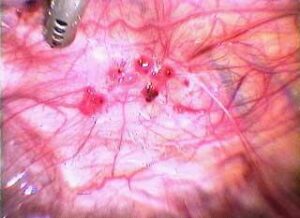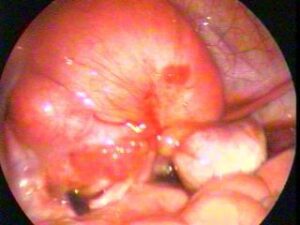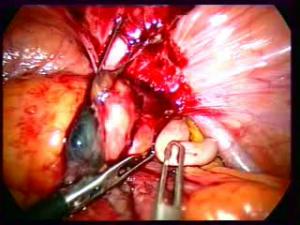
Email : info@gghospital.in | Phone : +91 99622 29940
Home » ENDOMETRIOSIS
DEFINE ENDOMETRIOSIS
Endometriosis is a prolonged disease which lasts from adolescents to menopause.
It is due to the endometrial cells implanting outside the uterine cavity by chance through retrograde spill through the fallopian tube during menstruation in to the pelvic cavity or the cells spreading through blood stream or lymphatic channel.
It is estimated to affect 176 million women across the world. In India over 32 millions are affected.
This affects women during prime year of their lives, a time when they should be finishing their education, starting and maintaining a career, building relationships and perhaps starting a family.
Endometriosis in the pelvis causes chronic pelvic inflammatory reaction leading to chronic pelvic pain.



What is its incidence?
What are the classifications of endometriosis?
According to the classification of American Fertility Sterility Society, endometriosis can be classified as :




Who needs Treatment?
Patients with pain, pelvic pathology and Infertility
What are the signs and symptoms of endometriosis?
Signs
Symptoms
How is infertility caused by endometriosis?
How does one make a diagnosis of endometriosis through USG?
Ovarian Endometrioma
